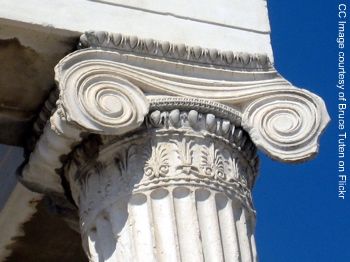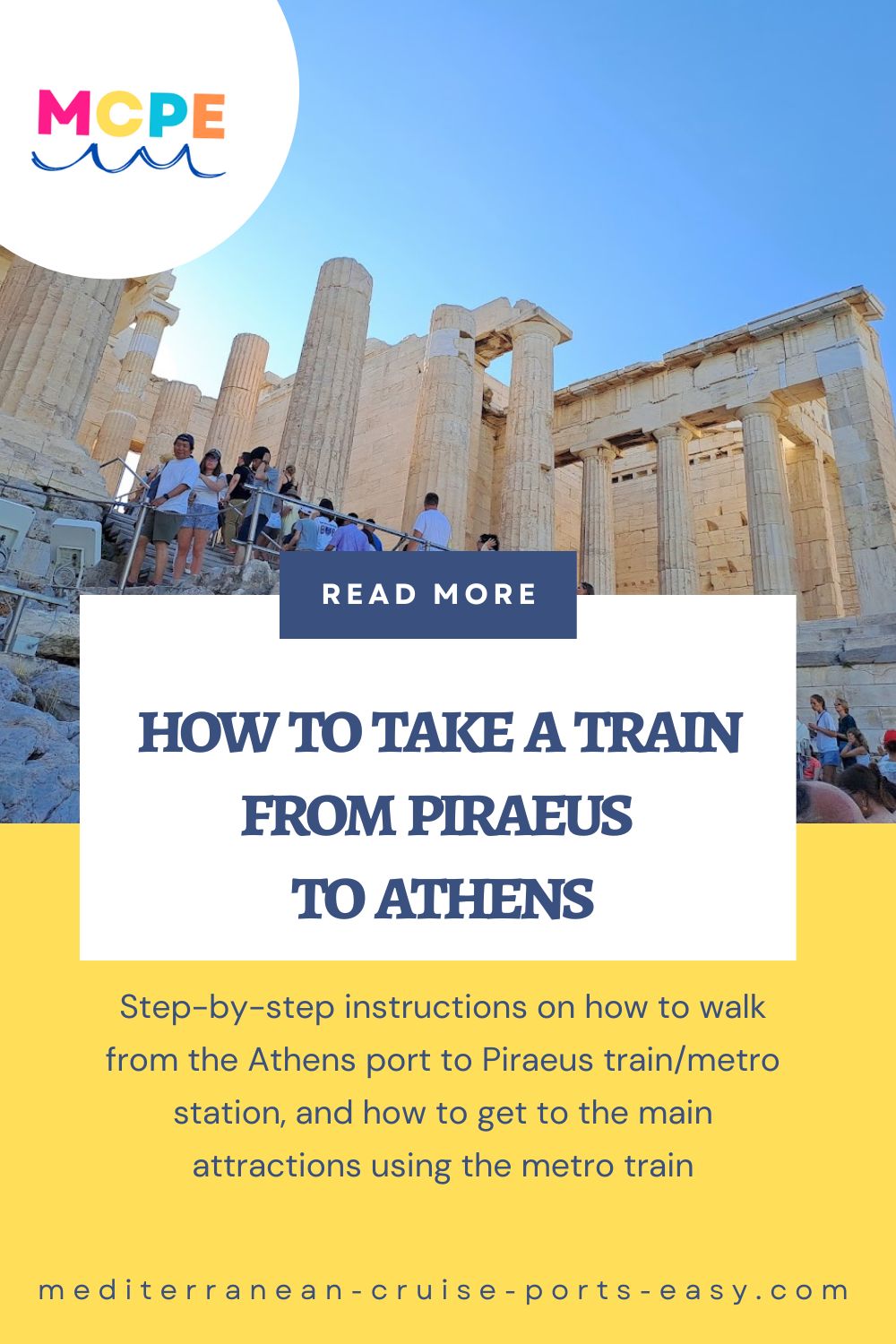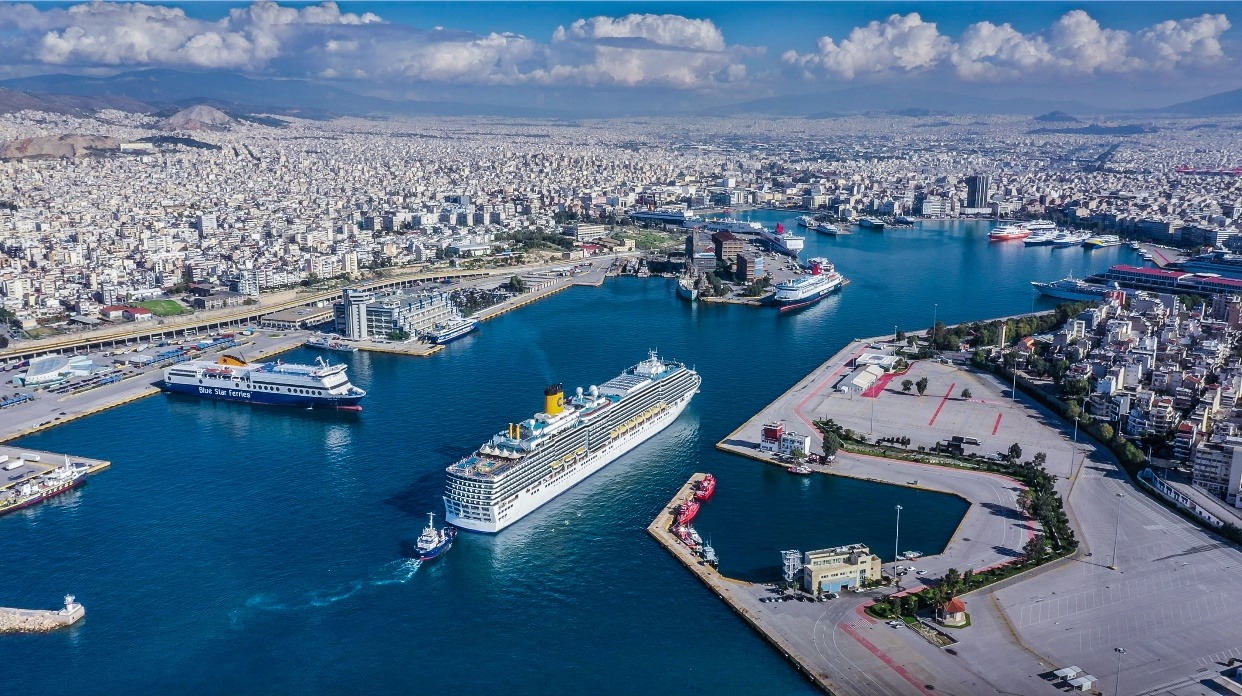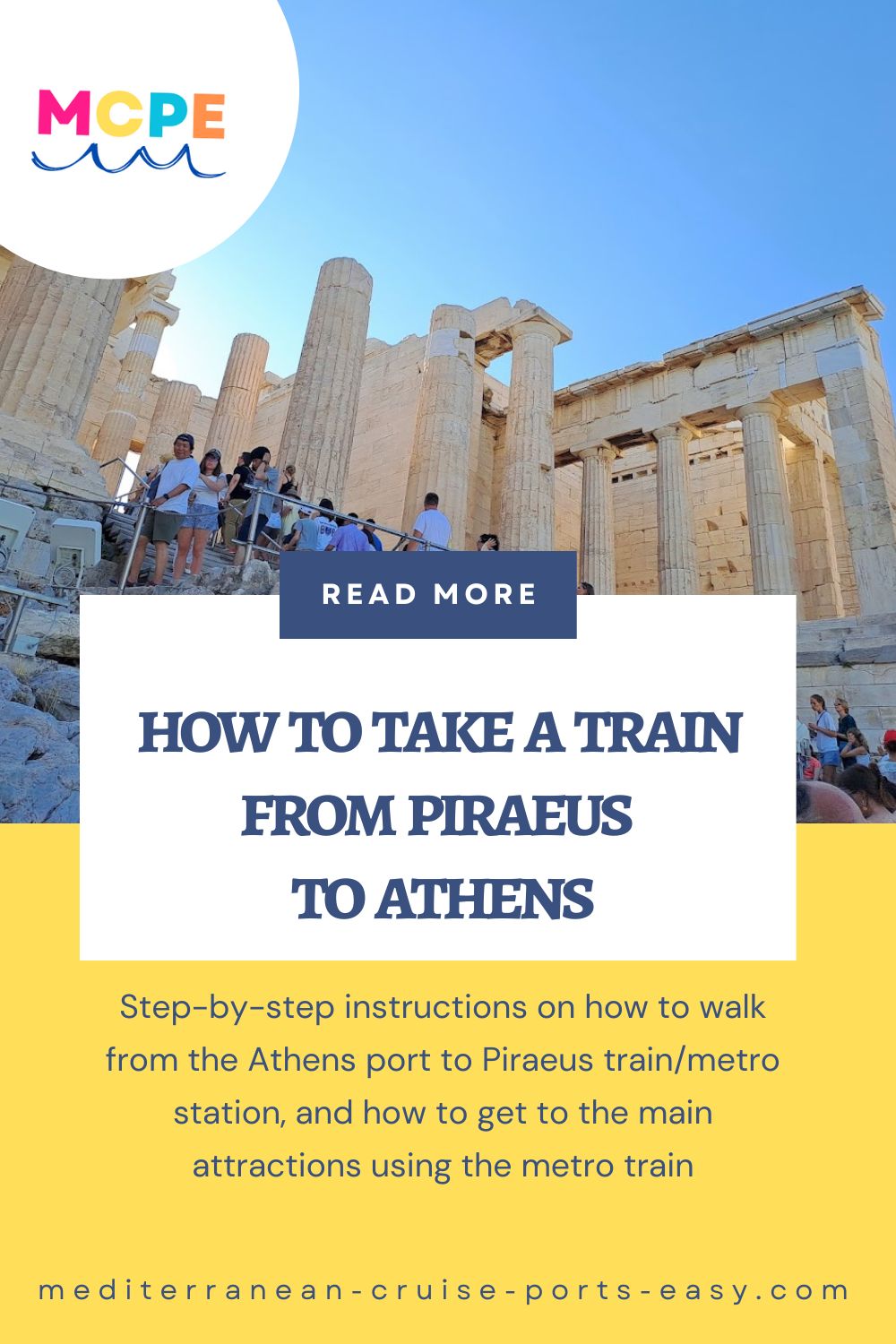Athens Acropolis - the Rock Star of Ancient Athens Greece
Athens Acropolis – learn why everyone rushes to visit the Acropolis in Athens Greece, home of the Parthenon, dedicated to the patron goddess of Athena
Why is Athens Acropolis famous?
Today, the Athens Acropolis is a UNESCO World Heritage site and one of the most visited tourist attractions in Greece.
The only problem with world famous cultural sights like the Athens Acropolis is this: we have a feeling we’ve seen them before.
Throughout our life we’re being bombed with images of the famous Athens rock: we’ve seen it in the text books, art monographs, postcards, travel brochures… and not to mention that the Athens Parthenon, the most important temple on the Athens Acropolis, is the most copied building in the world.
Athens Acropolis facts: Elevation: 156m (512 ft) above sea level Area: 3 hectares Age: 2400 years old Marble Blocks:70,000 tons of marble used Visitors: 2,9 million in 2019 Importance: proclaimed as the pre-eminent monument on the European Cultural Heritage list of monuments on 26th March 2007 |
That’s why when we finally get to the real Acropolis it all looks somewhat familiar. We kind of almost take it for granted. To avoid this and to really appreciate the majesty of Athens Greece attractions like the Athens Acropolis, it helps to put it into an historical perspective.
Looking to visit Acropolis straight from the cruise ship? Here's the best private shore excursions:
Is Acropolis and Parthenon the same thing?
Planning a shore excursion into Athens?
Looking for a reliable small-group tour that picks you up at the Piraeus cruise port, includes skip-the-line tickets, takes you to the top sights in Athens, and brings you back to your ship on time?
No worries—check out the Best Shared Athens Tours from Cruise Ships right here.
The Acropolis and the Parthenon are related but not the same thing.
The Acropolis refers to the elevated rocky hill located in the city of Athens, Greece. It served as the fortified citadel and religious center of the ancient city-state of Athens.
The Acropolis is home to several structures, including the Parthenon.
The Parthenon is one of the most famous structures on the Acropolis. It is a magnificent temple dedicated to the goddess Athena, the patron deity of Athens.
So, the Parthenon is a specific structure located on the Acropolis.
The Acropolis encompasses the entire hill and includes other temples, buildings, and monuments apart from the Parthenon.
Hope it's much more clear now.
For the best ways to reach the Acropolis and Parthenon read my page Athens transportation - there you will find all about getting the Express Bus X80 from the cruise port into Athens, getting the public bus 040, and how to get from Piraeus cruise terminal to the train station.
Hop-on, hop-off buses are also one of the options when getting to the Acropolis from Piraeus cruise port:
When was the Acropolis built?
How old is the Acropolis?
First of all, think about this: Athens Acropolis was first inhabited in the Neolithic period, around 4000 years BC. The earliest known people to inhabit the rock of the Athens Acropolis were the Mycenaean Greeks.
However, it was during the Mycenaean period (around the 14th century BCE) that the Acropolis began to take shape as a fortified citadel. The Mycenaeans built a fortification wall and constructed various structures on the hill
The construction of the Acropolis in Athens as we know it toway, began in the 5th century BCE (around 447 BCE) during the Golden Age of Athens under the leadership of Pericles.
The main buildings, including the Parthenon, were completed in approximately 438 BCE. This means that the Acropolis is over 2,400 years old as of the present day.
And now think that the Parthenon, Propylaea and Erecheteion were all built 5 centuries before Jesus Christ was even born, and discovering America sounded like the wildest science fiction story.
And they’re all still standing up for you to see to this day!
But apart from that, besides looking at its physical appearance only, when visiting the Athens Acropolis, you will be visiting the symbol of many things important to Western Civilization in general.
Acropolis Greece is where some of the famous myths took place, earliest cults started, democracy developed… it is a place that has been inspiring the world for two and a half millennia, a symbol of free spirit, philosophy and architecture.
These are just some of the reasons why it is so important and famous.
Dining-room table tidbit: The Athens Acropolis was also known as Cecropia, after the legendary serpent-man, Cecrops, the first Athenian king. |
What is an acropolis?
In Greek, "Acropolis" (ἀκρόπολις) translates to "high city" or "city on the extremity" when literally translated. The Acropolis refers to the elevated rocky hill located in the center of Athens, Greece.
Although, when we say Acropolis, we automatically think of the Athens Acropolis, it’s important to know that every Greek town of that time had its own acropolis, for instance, you might have a chance to also see Lindos, Rhodes acropolis as part of your Mediterranean cruise, too.
An Acropolis was a citadel of each town, built on a naturally elevated ground for the purpose of defense.
Looking to visit Acropolis with one of the shared tours straight from the cruise ship dock? Check the best value for money/reviews ratio tours...
What was the Acropolis used for?
The Acropolis served multiple purposes:
- Religious Significance: The Acropolis was home to several temples dedicated to the Greek gods and goddesses, most notably the iconic Parthenon, which was dedicated to the goddess Athena, the patron deity of Athens.
- Cultural and Political Center: The Acropolis was the political and cultural hub of ancient Athens. It housed important government buildings, including the Propylaea (monumental gateway), the Erechtheion (dedicated to various gods and heroes), and the Temple of Athena Nike (dedicated to the goddess of victory). These structures symbolized the city's power, prosperity, and democratic ideals.
- Defense and Protection: The location of the Acropolis on a prominent hilltop provided strategic advantages for defense. It offered a vantage point to monitor and protect the city, and its fortified walls served as a defensive barrier during times of conflict or invasion.
Who built Athens Acropolis?
As mentioned before, the first settlements on the Athens Acropolis date back to Neolithic times, i.e. 5000 years ago.

In Mycenaean times, there was a palace here and a Cyclopean massive circuit wall was built and served as the main defence for the acropolis until the 5th Ct AD.
Before Classical times there were a couple of temples standing at the Acropolis, including the Older Parthenon which was still under construction when the Persians sacked the city in 480 BC and burnt and looted the building.
After Athens’ victory over Persia, the Golden Age of Athens followed, during which the classical leader Pericles commissioned the rebuilding of the temples and buildings on the Acropolis, including the Parthenon, the Propylaea, the Erechtheion and the temple of Athena Nike.
The two architects responsible for the construction of the Parthenon were Ictinus and Callicrates, while Phidias was in charge of sculpture.
In Classical times, the power was moved down to the Agora and the Acropolis became a purely religious site.
During the Hellenistic and Roman times, many of the buildings in the area of the Acropolis were fixed and with every new usurper new monuments were built and added to the complex.
The last important ancient constructions were the Temple of Rome and Augustus during the Julio-Claudian period and the grand Odeon, the stone amphitheatre with a capacity of 5,000, built by Herodes Atticus.
Dining-room table tidbit: Through history the Athens Acropolis became the fortress of a medieval town, the Athens Parthenon was turned into a Byzantine church, crusader cathedral, an Ottoman mosque, then a warehouse to store gunpowder which is the reason the Parthenon doesn’t have a roof anymore. Namely, it was destroyed when the gunpowder exploded during the Venetian siege. |
What are the top 10 attractions of the Athens Acropolis?
What is inside the Acropolis?
Here’s a what-is-what list and a plan of ruins that used to, or still stand, at the Athens Acropolis.
1. Parthenon – undoubtedly the rock-star of the Athens Acropolis and one of the most important architectural structures in the world. Read more about it in our article on Athens Parthenon.
2. Old Temple of Athena – archaic temple dedicated to Athena Polias, patron deity of the city. It is possible it was built on top of the remains of the Mycenean palace.
3. Erechtheum – a temple built in the 5th Ct BC, dedicated either to the legendary Greek hero Erichtonius or the legendary kind Erechteus II. Phidias was in charge of its sculpture. On its south side there is the famous "Porch of the Maidens", with six draped female figures (caryatids) as supporting columns. The caryatids that can be seen there today are the casts. The originals have been moved to the New Acropolis Museum to protect them from further destruction by the Athens city smog.
4. Statue of Athena Promachos – at this spot used to stand the gigantic bronze statue (7m high on top of a 2m base) of Athena goddess, patron of Athens, standing with her shield resting upright against her leg, and a spear in her right hand. The statue could be seen from the sea. It was one of the first works of Phidias. It was one of the most famous statues of antiquity. It stood overlooking the city for over 1000 years until it was deported to Constantinople in 465 and finally destroyed by a Christian mob in 1203.
5. Propylaea – the monumental entrance to the flat top of the Acropolis. It was one of the buildings built by Pericles in the 5th Ct. Besides providing security, its role was to create a dramatic first impression before seeing the Parthenon.
Under Frankish occupation (1204-1456) the Propyleia were converted into a residence for the Frankish ruler, and in the Ottoman period (1456-1833) into the Turkish garrison headquarters.
6. Temple of Athena Nike – a small temple dedicated to one of many of Athena goddess’ forms, Victory. The Temple of Athena Nike was an expression of Athens' ambition to be the leading Greek city-state in the Peloponnese.
7. Eleusinion – an Athenian temple to Demeter, located at the base of the Acropolis. The Eleusinion was the place where all sacred objects associated with the Eleusinian Mysteries were kept between ceremonies. The mysteries, lasting two thousand years, were a major festival during the Hellenic era. Although the rites, ceremonies, and beliefs were kept secret, as initiation was believed to unite the worshipper with the gods and included promises of divine power and rewards in the afterlife.
8. Sanctuary of Artemis Brauronia or Brauroneion – the Brauroneion was the sanctuary of Artemis Brauronia, protector of women in pregnancy and childbirth.
9. Chalkotheke – a building that housed the treasury of Athens. It contained the bronze (chalkos) and other metal possessions of the treasury.
10. Pandroseion – this is where The Pandroseion once stood, a sanctuary dedicated to Pandrosus, one of the daughters of Cecrops I, the first king of Attica.
Want to visit the Acropolis at your own pace and just need a transfer from the cruise ship to this amazing attraction in Athens? Here's what I found for you...
- Home
- Athens Acropolis



















